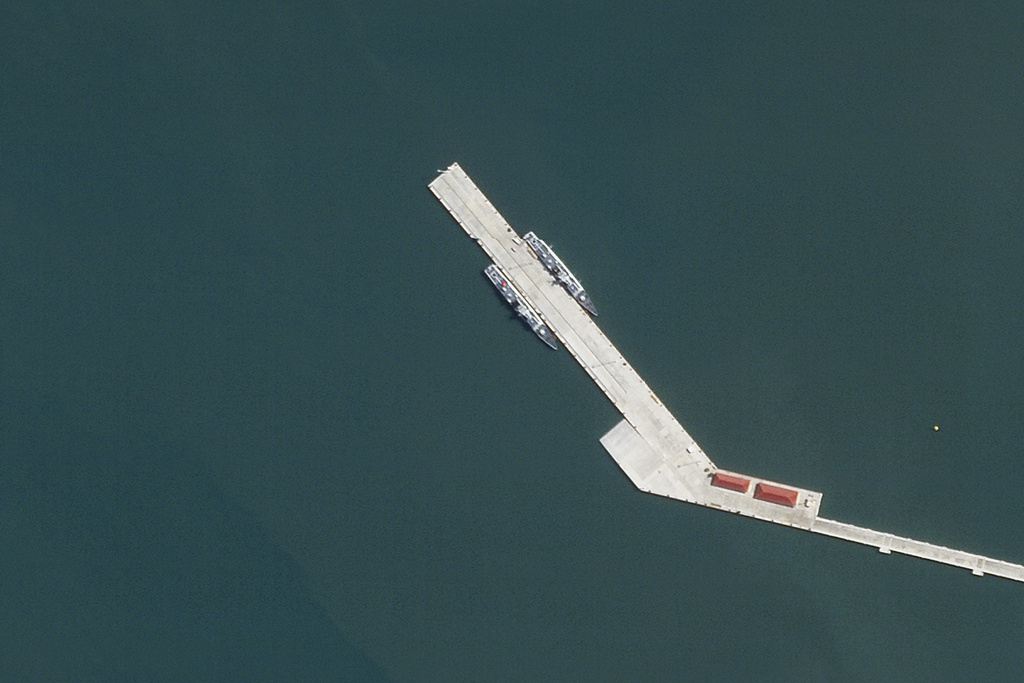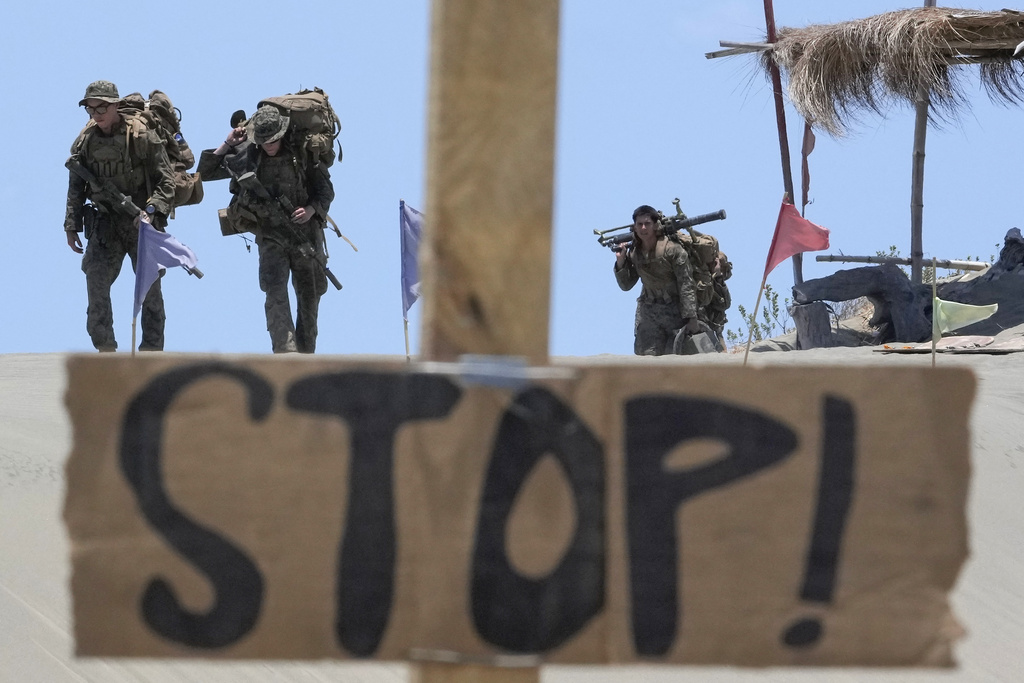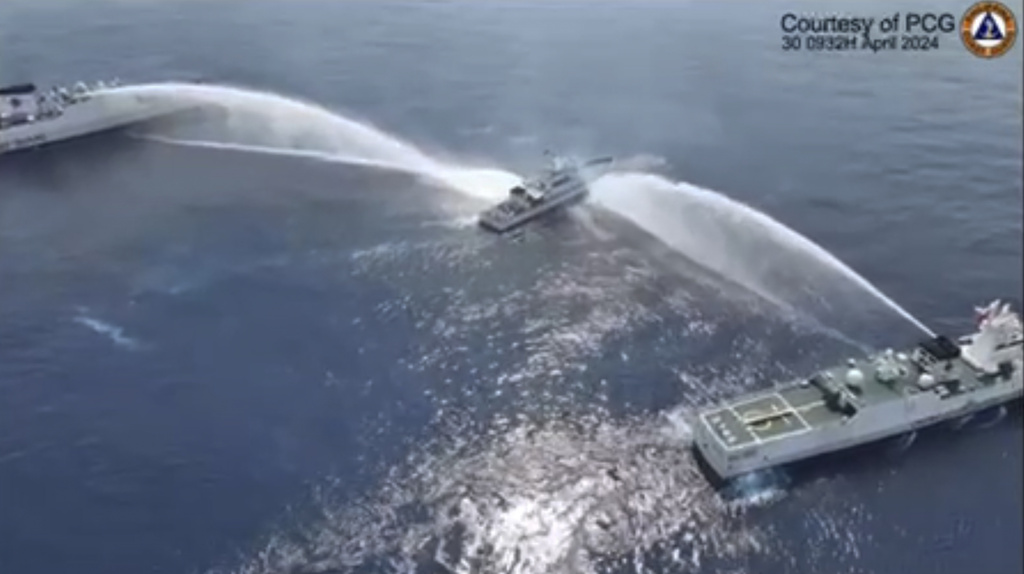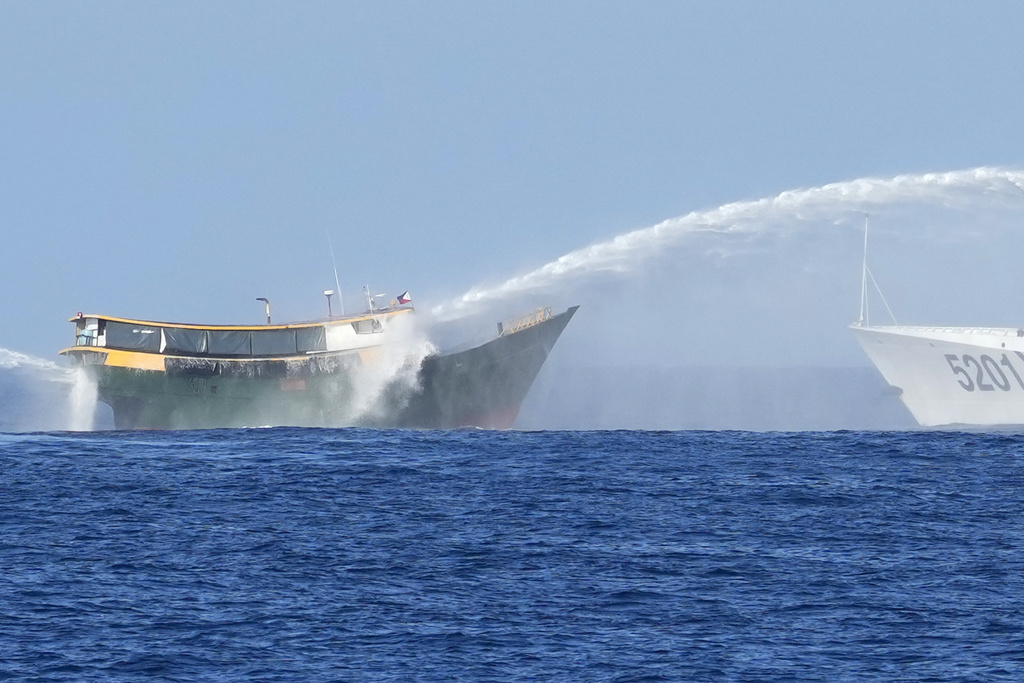
PHNOM PENH, Cambodia (AP) — Cambodia’s Defense Ministry insisted Wednesday that the months-long presence of two Chinese warships in a strategically important naval base that is being newly expanded with funding from Beijing does not constitute a permanent deployment of the Chinese military in the country.
Questions had arisen after the Center for Strategic and International Studies reported last month that two Chinese corvettes that docked at the Ream Naval Base’s new pier in December had maintained a nearly permanent presence there since.
Current satellite images, analyzed by The Associated Press, confirm that the two ships remained there on Wednesday, more than five months since they initially appeared.
The United States and others have long worried that the new pier at the Ream Naval Base, built with Chinese funding, could serve as a new outpost for the Chinese navy on the Gulf of Thailand, but Cambodia has said that would not happen.
Asked about why the two ships had been there for five months, Defense Ministry spokesperson Gen. Chhum Socheat told the AP they were due to take part in a joint Cambodian-Chinese military exercise later this month, and that they were also involved in training Cambodian sailors.
“We have been clear that Cambodia is not allowing any foreign forces to be deployed on its territory,” he said. “That won’t happen; that point is in our Constitution and we are fully following it.”
He said the ships were also “testing” the new pier, and that they were on show for Cambodia, which was considering purchasing similar warships for its own navy.
“The ships are docked for the training period only, they are not staying permanently,” he said.

Controversy over Ream Naval Base initially arose in 2019 when The Wall Street Journal reported that an early draft of a reputed agreement seen by U.S. officials would allow China 30-year use of the base, where it would be able to post military personnel, store weapons and berth warships.
The base sits adjacent to the South China Sea, where China has aggressively asserted its claim to virtually the entire strategic waterway, and also provides easy access to the Malacca Straits, a critical shipping route leading from it to the Indian Ocean.
The U.S. has refused to recognize China’s sweeping claim and routinely conducts military maneuvers there to reinforce that they are international waters.
Cambodia’s then-Prime Minister Hun Sen denied there was such an agreement. He pointed out that Cambodia’s Constitution does not allow foreign military bases to be established on its soil, but said visiting ships from all nations are welcome.
Defense Ministry spokesperson Chhum Socheat also said in a post on Facebook late Tuesday that the current prime minister, Hun Sen’s son Hun Manet, had made similar comments in April.
In its report, however, Washington-based CSIS noted that two Japanese destroyers that had made a port call in February were routed to a different port, and that Cambodia’s own boats had continued to use the base’s older, smaller pier to the south.
China only operates one acknowledged foreign military base, in the impoverished but strategically important Horn of Africa nation of Djibouti, but many believe that its military is busy establishing an overseas network.
The U.S. has more foreign military bases than any other country, including multiple facilities in the Asia-Pacific region.
____
US and Philippine forces sink a ship during largescale drills in the disputed South China Sea
LAOAG, Philippines (AP) — U.S. and Philippine forces, backed by an Australian air force surveillance aircraft, unleashed a barrage of high-precision rockets, artillery fire and airstrikes Wednesday and sank a mock enemy ship as part of largescale war drills in and near the disputed South China Sea that have antagonized Beijing.
Military officials and diplomats from several countries watched the display of firepower from a hilltop along a sandy coast in Laoag City in Ilocos Norte, Philippine President Ferdinand Marcos Jr.’s northern home province.
More than 16,000 military personnel from the United States and the Philippines, along with a few hundred Australian troops and military observers from 14 countries, were participating in annual combat-readiness drills called Balikatan, Tagalog for shoulder-to-shoulder. The drills, which started April 22 and end Friday, include a scenario of a foreign invasion of the Philippine archipelago.

It’s the latest indication of how the United States and the Philippines have bolstered a defense treaty alliance that started in the 1950s amid their concern in recent years over China’s increasingly aggressive actions in disputed territories in Asia.
Marcos has ordered his military to shift its focus to external defense from decades-long domestic anti-insurgency operations as China’s actions in the South China Sea become a top concern. That strategic shift dovetails with the efforts of U.S. President Joe Biden and his administration to reinforce an arc of alliances in the Indo-Pacific region to counter China.
China has angered the Philippines by repeatedly harassing its navy and coast guard ships with powerful water cannons, a military-grade laser, blocking movements and other dangerous maneuvers in the high seas near two disputed South China Sea shoals. They have led to minor collision that have injured several Filipino navy personnel and damaged supply boats.

“We’re under the gun,” Philippine Ambassador to Washington Jose Romualdez told The Associated Press in a telephone interview.
“We don’t have the wherewithal to be able to fight all of this bullying coming from China so where else will we go?” Romualdez said. “We went to the right party, which is the United States and those that believe in what the U.S. is doing.”
China has accused the Philippines of setting off the hostilities in the disputed waters by encroaching in what it says are its offshore territories, demarcated by 10 dashes on a map. It says the Chinese coast guard and navy have been forced to take action to expel Philippine coast guard and other vessels from those areas. The Philippines has repeatedly cited a 2016 international arbitration ruling based on the United Nations Convention of the Law of the Sea that invalidated China’s claim over virtually the entire South China Sea on historical grounds.
China did not participate in the arbitration complaint filed by the Philippines in 2013, and has rejected the ruling and continues to defy it.

After being hit repeatedly by missile and artillery fire and bombs dropped by U.S. and Philippine warplanes during the combat drills, the mock enemy ship sank as black smoke billowed from its stern. The target ship was made in China but decommissioned by the Philippine navy in 2020 due to mechanical and electrical issues, according to the Philippine military.
Philippine military officials said the drills were not directed at any country. China has opposed military drills involving U.S. forces as well as increasing U.S. military deployments in the region, which it warned would escalate tensions and endanger regional stability.
For the first time in years, the combat exercises were staged in and near the fiercely contested Spratly Islands area, which China has closely guarded with its coast guard, navy and suspected militia flotillas.
_____













































